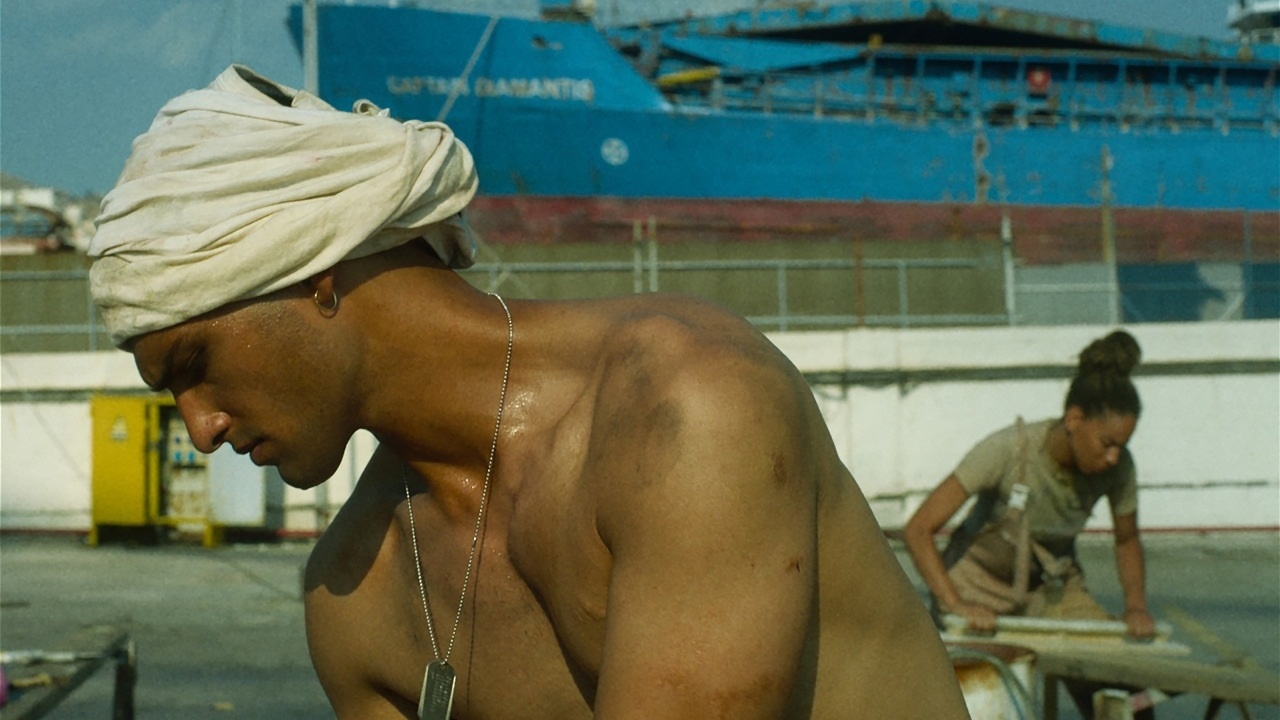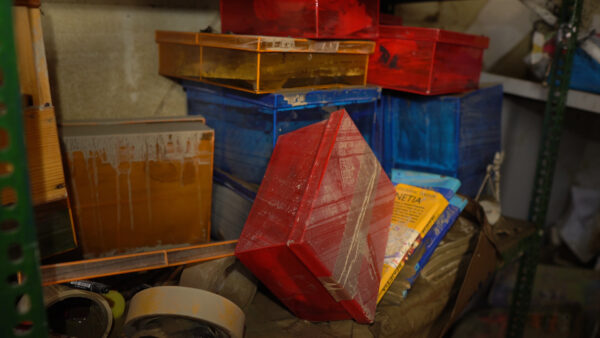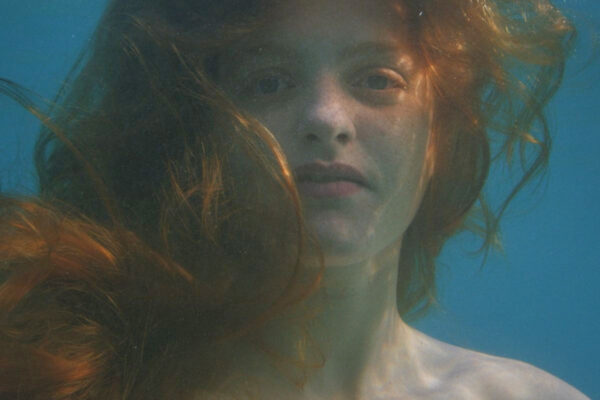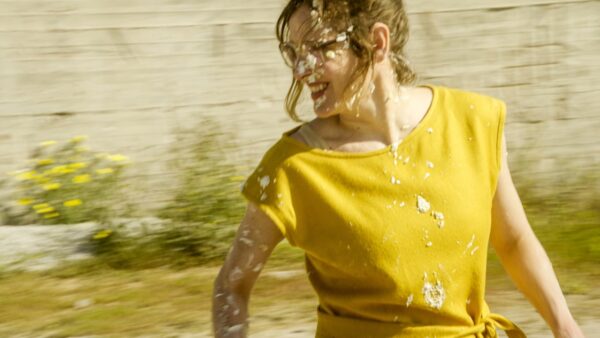How To Hold A Hand
On Xerxes’ Throne
Loneliness plays a crucial role in Evi Kalogiropoulou’s coming-of-touch story.

In the middle of Evi Kalogiropoulou’s short film On Xerxes’ Throne, a young black man begins to sing acapella, his body gently rocking back and forth to each slightly elongated last syllable—the melody of a ballad paralleling the lyrics of a dignified soliloquy. “Aniko se mena” (“I belong to me”) is a song both melancholy and reveling in the way it holds its simple refrain to a profound, unforgiving realisation of one’s state of unbending solitude—“I belong to myself and my dreams / I don’t want anyone in my loneliness.” While the man sings, the camera treats us to glimpses of the scene from multiple angles, all revealing an environment of manual labour—a shipyard construction site—in a momentary stillness, as if a hymn is being sung. Usually, a singing centrepiece in a short film scene either disrupts or grounds it, but what On Xerxes’ Throne evokes here is a more subtle form of self-imposed glorious control. And loneliness plays a crucial role.
I Belong To Me (2021) was the name of the short’s predecessor in the form of video art, which was the kernel of what ended up On Xerxes’ Throne. The installation set the narrative as dystopian and uncanny by virtue of its location (the shipyards of Perama near Athens) and its prohibition of touch amongst the workers. Because of this tactile ban, bodily interactions are capped at the human-machine axis—these preconditions also outline the world in the 2022 short.
For the woes of belonging are quintessentially human, such restrictive premises are often a litmus test of how deep human desire can dig and how spontaneously it can erupt, risking the destruction of a carefully calculated order. This is the kind of epos Evi Kalogriopoulou is concerned with, and this interest twins her with French filmmaker Claire Denis, whose Beau Travail (1999) haunts On Xerxes’ Throne—the two are effectively kindred spirits. As in Beau Travail, bodies are prohibited ground but also the surface of battles: they shimmer with sweat and tenseness so that our gaze can latch onto them involuntarily, again and again. The stillness of the camera is, it seems, also a consequence of such great attention until we notice the handheld sways over sleeping men and women in the barracks. It does so only lightly, as a substitute for the disallowed touch.
In this film, overlaying is a disavowing mechanism, an act at once subtle and rebellious to defy the Draconian measures controlling the workers’ bodies, and in Foucaudian fashion, their internalisation of surveilling that rule-following. But what kind of overlaying can substitute touch? Kalogriopoulou turns to history and, in particular, one of the decisive events in the Ancient world just by using real locations in her film. The Greek land is rich in its mythological and historiographic capacities, and the locus itself already thrusts the symbolic association—such is the case with Perama being part of the region overlooking the strait where the legendary Battle of Salamis (480BC) took place. In their decisive victory (albeit scatteredly documented) against the Persian invasion, the Greeks (Athens and allies) assured the future of Western civilisation as we know it. The tale has it that the only person who may have had a complete account of how the battle unfolded was emperor Xerxes, who installed himself in the nearby Mount Egaleo. From his promontory, the Persian ruler witnessed the demise of his people, and it is tragically ironic to have him as the sole witness of the entirety of his loss. Loneliness, again.
With this historical background, On Xerxes’ Throne does not lose its mystique; on the contrary, it conjures up a new sensuality thanks to the layering of place and land. Similarly, the figure of the one supervisor is also singular in the film, as it was in the aforementioned battle. Almost all the film uses voiceover narration in the first person (I, we) to guide the viewer through this strange place. That’s Yorgos, who must cross over to Salamis Island monthly to get provisions. In his stringent role, he dreams of penetrating the sea surface in an invasively intimate confession. The longing for touch for something non-mechanical extends across humans and nature alike: desire swells and moulds itself into unexpected shapes and forms with the tantalising proximity—of bodies, of water. Resistance is lonely.
Distanciated, too, is the camera’s look—as if from this overlooking point of view, it draws closer to different characters, much like the scene mentioned in the beginning, to observe them, brush against their presence, and suggest a passage of touch is possible. Repression is a governing mechanism, as undying as the automated machinery and wheels that rule the workers’ everyday lives. Still, Kalogiropoulou unearths something even more subdued and inarticulate in how purity breeds its contamination. Until, of course, both these categories become annihilated in the face of desire.
“Aniko se mena” is originally sung by the iconic Greek singer of laïká (commercial folk, pop music), Yorgos Mazonakis, who here plays the protagonist named after him. This name-persona layering gives the film another, more playful ring regarding the pop star image and the intertwining of autobiographical elements, such as the matching character-actor names and the fact that Mazonakis’ father once worked at the Perama shipyards. The central song appears in two renditions, one sung and one reworked by the film’s composer, Kid Moxie, doubling the metatextuality and letting it fold back into itself. At the same time, the solitude insisted on by the lyrics appears to dissolve—with every rendition, layer over layer, a choir of voices can be heard in the same “I”—a coming-of-touch story is never one to end in loneliness.




There are no comments yet, be the first!